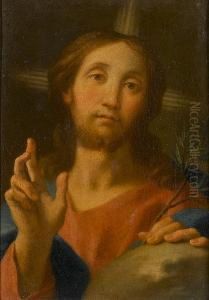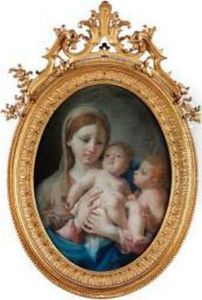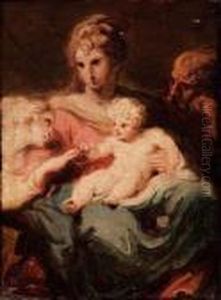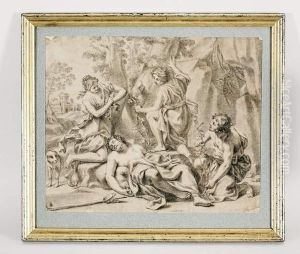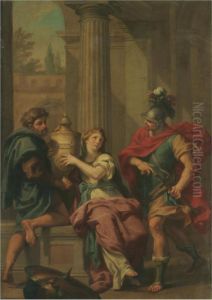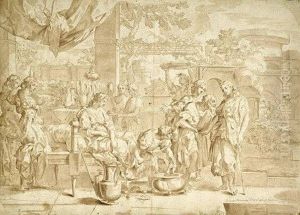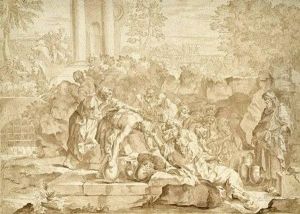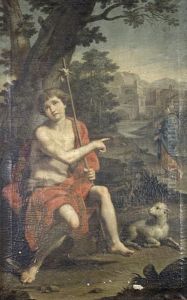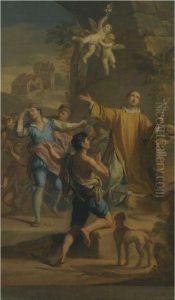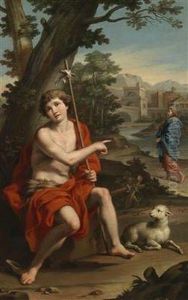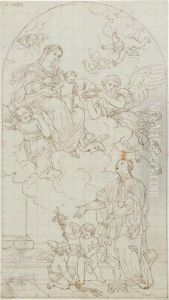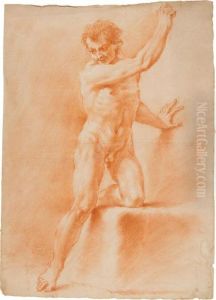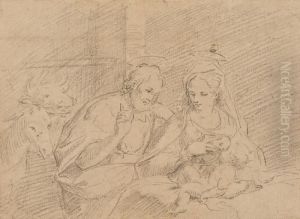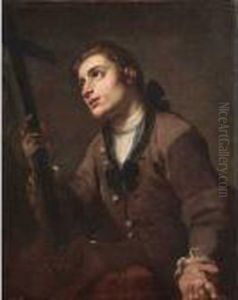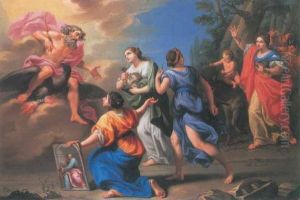Jacopo Alessandro Calvi Il Sordino Paintings
Jacopo Alessandro Calvi, known as Il Sordino, was an Italian painter born in Bologna in 1740. Not widely known outside of Italy, Calvi's contributions to art, however, are significant within the context of the Bolognese school of painting. His nickname, 'Il Sordino,' meaning 'the mute,' suggests a mysterious aspect of his personality or perhaps an idiosyncratic approach to his art and interaction with his contemporaries.
Calvi's artistic journey began under the tutelage of notable painters of the time in Bologna, a city famed for its vibrant artistic community and the presence of the Accademia Clementina (Clementine Academy), where he likely received part of his art education. His style was deeply influenced by the Baroque and Rococo movements, which were predominant during his early years, but he also showed an early interest in the emerging Neoclassical style, which sought to revive the simplicity and elegance of ancient art.
Throughout his career, Calvi specialized in religious and historical paintings, imbuing his works with a sense of drama and emotion characteristic of the Baroque tradition, yet with a restraint that hinted at the Neoclassical influence. His works were appreciated for their delicate coloration and detailed portrayal of human emotions. Calvi was also known for his skill in fresco painting, a technique he employed in decorating several churches and public buildings in Bologna and its surroundings.
Despite his talents, Calvi's life was marked by financial difficulties and periods of obscurity, partly due to the changing tastes in art and the political upheavals Italy faced during his lifetime. The Napoleonic Wars and the subsequent reorganization of Italian states affected the patronage system that artists like Calvi depended on.
Jacopo Alessandro Calvi 'Il Sordino' died in 1815, leaving behind a body of work that, while not as widely recognized today, played a role in the transition of Italian art from the exuberance of the Baroque to the disciplined elegance of Neoclassicism. His legacy is preserved in the collections of several Italian museums and churches, standing as a testament to the depth and complexity of Bologna's artistic heritage during the 18th century.
